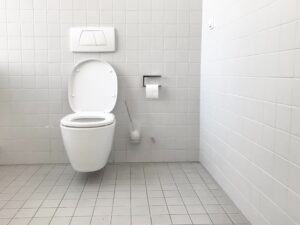
Benign protastic hyperplasia (also called BPH, or referred to as prostate enlargement)requires BPH treatment. But, when you're seeking relief, there are several different treatment options which you can choose from. So, today, we're explaining our Georgia Prostate Institute's specialists are explaining each of your options, and highlighting how interventional radiology can provide effective relief.
What is BPH?
With this condition, you experience enlargement of the prostate gland due to non-cancerous causes. (This walnut-shaped gland produces the fluid for semen, making it an important part of the male reproductive system). Still, because the prostate surrounds the urethra and bladder, any enlargement can lead to lower urinary tract symptoms, or LUTS.
BPH Symptoms
What are the two most common symptoms of BPH? Many men complain of losing the ability to urinate or of having difficulties completely emptying their bladders, with the end of urinary flow slowing to a dribble. Other LUTS symptoms include:
Seeking BPH treatment
When you're choosing between BPH treatment options, you should be guided by symptom severity. Some men can simply observe their symptoms for any changes, making sure your condition isn't getting worse. At the same time, you can incorporate lifestyle changes to reduce your symptom impact. Try urinating as soon as you feel the need. Schedule regular bathroom trips, even when you don't feel the need, and avoid caffeinated or alcoholic beverages, especially at night.
On that note: drinking at night is something to think about as well. You should stop all all fluid consumption at least two hours before you plan to go to sleep. Instead, try sipping small volumes of fluid all day long, instead of guzzling beverages all in one go.
With BPH, regular exercise can also help improve your symptoms by managing stress and reducing tension. But you should also carefully discuss over-the-counter medication use with your doctor, since decongestants and antihistamines can worsen LUTS symptoms.
Medications for BPH
When symptoms become more intrusive, you may turn to BPH medications. Both finasteride and dutasteride lower hormone production in the prostate, in turn reducing its size. (However, these medications take at least three months to deliver noticeable symptom relief.)
Another option is to try Alpha-1 blockers; these blood-pressure medications relax the neck of the bladder, along with the prostate, making it easier to urinate. But, like all medications, these options for BPH treatment can interact with other prescriptions and cause unwanted side effects . As such, you may want to explore other pathways to relief.
Non-Surgical BPH Treatment
The FDA approves Prostate Artery Embolization, or PAE, for effective BPH treatment. We perform this outpatient procedure at our Georgia Prostate Institute to relieve LUTS and other effects of prostate enlargement. Now, not every patient can benefit from this treatment option, but you be a PAE candidate if you've failed to find BPH symptom relief with medications, prefer to avoid surgery, and aren't a good candidate for invasive procedures.
Ready to find LUTS relief? When medications and lifestyle interventions fail, we can provide non-surgical relief. Contact our Georgia specialists today to discuss treating BPH with PAE.

Atlanta
3225 Cumberland Blvd. Southeast, Suite 520
Atlanta, GA 30339
Stockbridge
1035 Southcrest Dr., Suite 220 + 250
Stockbridge, GA 30281
Tucker
1975 Lakeside Pkwy., Suite 300
Tucker, GA 30084
Scheduling
Please contact our dedicated specialists to schedule a consultation today.
2025 Georgia Prostate Institute. All rights reserved. Website Design by Healthcare Success